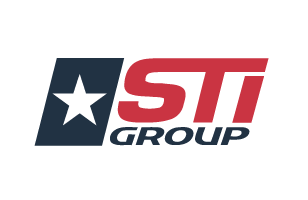Lease Automatic Custody Transfer Units, or LACT Units as they are commonly abbreviated are metering equipment designed to accurately guage the volume and quality of crude oil as it changes custody from one party to another. LACT Units provide the means of correctly determining compensation, which makes them very important to both parties. A LACT Unit is only as good as the meters and parts which comprise it. This article will examine several key flowmeter types, major LACT Unit parts, and why LACT Units are so well suited to modular process skids.
Custody Transfer and Types of Flowmeters
Different types of LACT Units use different types of flowmeters to accurately measure the custody transfer of the crude oil. The type of meter the system uses will typically depend on a variety of characteristics and considerations about the well. A LACT Unit’s flowmeter is a good fit for the particular well when it is designed to successfully overcome the primary hurdles at that well. Here is a look at four major flowmeter types, how they work, and what their advantages and disadvantages are:
Positive Displacement Meters – Positive displacement meters work by tracking the volume of flow that physically displaces a part of the meter. Because this measurement method is so direct, positive displacement meters have a very high degree of accuracy. They can also handle a range of different viscosities, even high viscosity, without becoming impaired. However, they are somewhat more susceptible to damage from highly corrosive crude and may also experience problems from flow surges.
Conventional Turbine Meters – Conventional turbine meters use the mechanical energy present in the crude flow to rotate a turbine. The faster the flow…the faster the turbine rotates. The revolutions of the turbine can then be used to measure flow. Turbine meter advantages include being highly accurate, they can handle a wide range of flows, temperatures, and pressures, and they are relatively small and inexpensive. However, they are also very sensitive to viscosity changes and do not handle high viscosity well. They also require that the flow be conditioned to prevent damage to the unit and they need back pressure control to prevent cavitation. Turbine meters are also susceptible to fouling.
Coriolis Meters – Coriolis meters use the force resulting from acceleration to measure the mass in reference to a center of rotation. This is accomplished by vibrating the tubes in which the fluid is flowing. Coriolis meters offer the benefits of requiring little maintenance and no flow conditioning, can deal well with viscosity changes, and aren’t strongly affected by corrosion. However, they are susceptible to deposits on parts which can in turn yield inaccurate results and require very accurate density to get good volume registration.
Ultrasonic Meters – Ultrasonic meters use sound waves to measure the velocity of crude flow. The frequency of the sound wave is reflected back due to the Doppler effect and can then be measured. Ultrasonic meters have the benefits of being very accurate, working with a wide flow range, not being susceptible to pressure drops, and being able to work in a bidirectional manner. However they are highly sensitive to entrained gas, sediments, and water, and they are prone to fouling.
Factors Which Influence Meter Selection
As discussed above, the conditions of the well will largely influence which type of meter the LACT Unit requires. These conditions include the following:
- Well Type – Crude Oil Wells or Condensate Wells
- Temperature Range
- Pressure Range
- Flow Range
- Viscosity Range
- API Gravity Range
- Water Content
- Wax and Emulsions Content
- Corrosiveness
- Deposits
The Major Components of a LACT Unit
LACT Units have a number of important, distinct parts, each of which perform different essential functions. For a more complete look at the different component parts and their functions visit our Modular Process Skids page on LACT Units. The major components include:
The Meter – As discussed above there are a variety of different meters available with different advantages and disadvantages. Meters are the most fundamental part of LACT Units, providing the actual measuring ability.
The LACT Control Panel – The LACT control panel is the primary point from which the entire unit can be operated.
The Charge Pump and Motor – The charge pump and motor provide the energy source for the LACT Unit.
The Meter Prover Loop – The meter prover loop is designed to verify that no leakage is occurring within the LACT Unit.
The Strainer – In some systems a strainer may be installed upstream of the pump or meter to help prevent damage from debris.
The Air Eliminator – The air eliminator removes air and vapor from the flow stream before it reaches the meter, thereby preventing skewed results that include air content.
The BS&W Probe and Monitor – The BS&W Probe and Monitor are designed to measure and monitor the the basic sediment and water content of the flow stream.
The Sampler System – The sampler system gathers samples to determine API Gravity and BS&W Content.
Valves and Sealings – LACT Units feature many valves and sealings which are designed to regulate the system, maintain pressure, prevent leakage or divert flow as needed.
LACT Units as Modular Process Skids
Because LACT Units consist of so many highly interrelated parts they are ideal candidates for being integrated into modular process skids. Modular process skids allow them to be more easily transported and installed. Since the system is fully integrated it also ensures excellent synergy between the various parts, and the units can be fabricated to the highest industry standards, ensuring quality, consistency, and reliability. Additionally modular process skid LACT Units can usually be fabricated more quickly, provide one company with single source accountability, and result in cost savings and greater overall efficiency and convenience.

